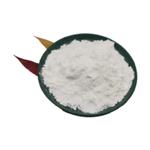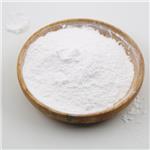Chemical Properties
Ammonium tartrate is a colorless crystalline
or white granular solid.
Chemical Properties
white crystalline powder
Uses
Ammonium L-(+)-tartrate finds application in the textile and pharmaceutical industries. It is also used to study protein structural analysis, biochemicals and reagents, biological buffers, chelators and proteomics. It acts as a nitrogen source in biological applications and cell culture media. Further, it is used in the study of crystal optimization research and preliminary diffraction data analysis of the Smad1 MH1 domain bonded to a palindromic SBE DNA element.
Uses
Textile industry, medicine.
Definition
ChEBI: An organic salt that is the diammonium salt of L-(+)-tartaric acid.
Flammability and Explosibility
Not classified
Safety Profile
Poison by intravenous
route. Moderately toxic by subcutaneous
route. When heated to decomposition it
emits very toxic fumes of NH3 and NOx.
Potential Exposure
Ammonium tartrate is used in the textile
industry and in medicine.
Shipping
UN3077 Environmentally hazardous substances,
solid, n.o.s., Hazard class: 9; Labels: 9-Miscellaneous hazardous
material, Technical Name Required.
Incompatibilities
Incompatible with oxidizers (chlorates,
nitrates, peroxides, permanganates, perchlorates, chlorine,
bromine, fluorine, etc.); contact may cause fires or explosions.
Keep away from alkaline materials, strong bases,
strong acids, oxoacids, epoxides. Strong oxidizers, especially
potassium chlorate, sodium nitrite may cause violent
reactions.
Waste Disposal
Dissolve or mix the material
with a combustible solvent and burn in a chemical incinerator
equipped with an afterburner and scrubber. All federal,
state, and local environmental regulations must be
observed. May be buried in a chemical waste landfill in
accordance with federal, state, and local statutes; or, if oxidized
and neutralized, it may be sent to a municipal sewage
treatment plant for biological treatment.




